Oct 15, 2024
How To Climb Mt Everest
How Long Does It Take To Climb Everest Mountain (8848.86m)?
Well, climbing a high mountain is a long and gradual process, and it may vary on weather conditions and physical strength. And Mt. Everest is not an exception. In general, it takes around Eight to Ten days to reach Everest Base Camp after spending few days in Kathmandu. And at the Everest Base Camp, you’ll spend around six weeks on Training, Proper Acclimatization,.Rotation to the higher camps & Final Summit Push.
One of the intentions of staying at Everest Base Camp for so long is getting used to cold weather, harsh environments, and being familiar with the mountain you are going to the summit. However, the Everest Climbing Itinerary may differ according to the weather conditions and climbers‘ adaptation to the environment and other issues. So, overall in general it takes 8 to 10 weeks (55days to 70 days) for the whole process of the Everest Expedition.
Mount Everest (8848.86m) Expedition Itinerary:
Day01: Arrival in Nepal, Kathmandu
Day02: Gear & Trip Preparation
Day03: Gear & Trip Preparation
Day04: Fly to Lukla and trek to Phakding (2610m), 3- 3.5hrs trek
Day05: Trek to Namche (3440m), 6-7hrs trek
Day06: Acclimatization Day. Day hike to Khumbu village or Everets Hotel (3860m)
Day07: Trek to Tengboche (3867m), 5-6 hrs trek
Day08: Trek to Dingboche (4400m), 5-6hrs trek
Day09: Day Hiking- Climb to Nangkartshang Hill (5100m)
Day10: Trek to Lobuche (4900m). 5-6 hrs walk
Day11: Trek to Everest Base Camp(53640m).6-7hrs walk
Day12 to Day55: Climbing Training, Proper Acclimatization, Stablish Camps, Fixing Ropes, Fixing Bridges, Rest & Summit Push
Day 56: Everest Base Camp: Clean Up and Packing Stuffs
Day57 to Day 59: Trek Back to Lukla
Day60: Lukla to Kathmandu by Flight
Day61-62: Spare Days in Kathmandu ( just for incase, if we need more time in the mountains). Sightseeing in Kathmandu
Day63: Departure
Note:- Please note that the Rotation & Acclimatization process may differ according to the weather conditions and climbers’ adaptation to the altitude and environment
#trekkinginnepal

THE BEST SEASON FOR A MOUNT EVEREST EXPEDITION
Mount Everest, standing tall as the highest peak in the world, offers a formidable challenge for climbers. Choosing the right season for an ascent is crucial for success and safety. Let’s explore the different seasons and their impact on climatic conditions, visibility, and the level of congestion on Mount Everest.
Spring (March to May)
Spring is widely regarded as the best season for a Mount Everest expedition. During this time, the weather begins to warm up, and the harsh winter conditions start to subside. The temperature at Basecamp rises over the course of the climbing season, from around -15 degrees at the beginning of March to plus degrees in May. The stable weather patterns in spring bring clear skies and reduced wind speeds, providing excellent visibility for climbers. The picturesque landscape is also adorned with blooming rhododendron forests, adding to the allure of the journey.
Summer (June to August)
Summer on Mount Everest is challenging and dangerous due to heavy rainfall, high humidity, and the risk of avalanches and landslides. Fog and cloud cover obstruct visibility, making navigation difficult. Unstable snow conditions caused by warm temperatures at lower altitudes further endanger climbers. There are no Mount Everest expeditions in summer.
Autumn (September to November)
Autumn is another favorable season for climbing Mount Everest. The weather becomes stable after the monsoon season, with clear skies and moderate temperatures. The days are generally dry, and the wind speeds are relatively low, providing optimal climbing conditions. The average temperature at the base camp ranges from -10°C to -20°C (14°F to -4°F). The autumnal landscape offers stunning views with colorful foliage, creating a visually captivating experience for climbers.
Winter (December to February)
Winter on Mount Everest is extremely harsh and inhospitable for climbers. Temperatures plummet well below freezing, reaching as low as -30°C (-22°F) at base camp. The extreme cold, strong winds, and heavy snowfall pose severe safety risks. Visibility is often compromised by blizzards and snowstorms. Due to these dangerous conditions, there are no Mount Everest expeditions in winter.
Furtenbach`s choice
Our Mount Everest Classic and Flash™ expeditions, on the north and south side, take place in the months of April to May. The exact schedule depends on regulatory requirements, the weather and snow conditions as well as the progress of security work along the route. In addition, the schedule of other groups is taken into account in order to avoid any potential traffic jams.
PREPARATION FOR CLIMBING MOUNT EVEREST
Climbing Mount Everest is one of the greatest adventures that a person can embark on.
Reaching the summit of the world’s highest mountain is an achievement that will be remembered for a lifetime. However, the journey is not an easy one, and it requires months of physical and mental preparation. This article will provide a few tips on how to prepare for an 8000er climb.
Health and fitness
The importance of health and fitness going on a big mountain expedition cannot be overstated. Having a fit and healthy body is essential for a successful and safe expedition. The first step to getting your body and mind ready for a big mountain expedition is to start a regular exercise routine. This should include both strength training and cardiovascular exercises. Strength training helps to build muscle and improve endurance, while cardiovascular exercises help to improve aerobic capacity and increase overall fitness. Additionally, regular stretching and Yoga can help to improve flexibility and reduce injury risk. Please contact us for specific training plan recommendations.
It is also important to pay attention to diet and nutrition. Eating a balanced diet will provide the body with the necessary nutrients to fuel your journey. Hydrating regularly is also essential to keep the body functioning smoothly. Finally, it is important to recover. Sleep helps to promote both physical and mental wellbeing, so make sure to get at least 8 hours of sleep each night. By engaging in regular exercise, eating properly and getting enough rest, you can ensure that your body and mind are in the best possible condition to take on the challenge of a mountain expedition.
Uphill Athlete X Furtenbach Adventures
Uphill Athlete and Furtenbach Adventures offer you the ideal support to achieve your mountain aspirations. Whether you’re embarking on your first expedition or bring decades of experience, Uphill Athletes’ training combines established sports science with decades of on-the-mountain expertise. From tailored training plans aligned with your sport and objectives to personalized coaching, you’ll receive the precise support required to reach your summit.
Training: As part of our collaboration with Uphill Athlete, we are excited to offer our customers an exclusive deal. Use the discount code “furtenbach” and receive a 10% discount on the Uphill Athlete membership program. Redeem now
Technical skills
Don’t underestimate the demands of an 8000er. You will need time – months of training for your physical fitness, build up your endurance and technical climbing experience. Climbing lower peaks will help you to get familiar with your equipment, rope handling and different types of terrain. Our expedition trainings in the Monte Rosa range (Europe) or Mount Hood area (US) are a perfect preparation. It’s for all who want to get a taste of expedition air and train for an 8000er. Learn different ice, snow and rock techniques, camping on a glacier and melting snow while climbing some of the most beautiful 4000ers in the Alps.
High altitude experience
Climbing lower expedition peaks like Aconcagua (6.962m) or Dhaulagiri VII (7.246m) will help you getting used to the effects altitude and high camp life. You will learn how your body responds to the hypoxic environment in high altitude and how your performance is affected.
We offer personalized training programs for each client, covering training expeditions, technical training, and structured training schedules. Tailored to individual needs and goals, our programs provide hands-on experience and specialized instruction for a successful outdoor journey.
EVEREST TRAINING
Climbing Mount Everest is one of the greatest adventures that a person can embark on. Reaching the summit of the world’s highest mountain is an achievement that will be remembered for a lifetime. However, the journey is not an easy one, and it requires months of physical and mental preparation.
Health and fitness
The importance of health and fitness going on a big mountain expedition cannot be overstated. Having a fit and healthy body is essential for a successful and safe expedition. The first step to getting your body and mind ready for a big mountain expedition is to start a regular exercise routine. This should include both strength training and cardiovascular exercises. Strength training helps to build muscle and improve endurance, while cardiovascular exercises help to improve aerobic capacity and increase overall fitness. Additionally, regular stretching and Yoga can help to improve flexibility and reduce injury risk. Please contact us for specific training plan recommendations.
It is also important to pay attention to diet and nutrition. Eating a balanced diet will provide the body with the necessary nutrients to fuel your journey. Hydrating regularly is also essential to keep the body functioning smoothly. Finally, it is important to recover. Sleep helps to promote both physical and mental wellbeing, so make sure to get at least 8 hours of sleep each night. By engaging in regular exercise, eating properly and getting enough rest, you can ensure that your body and mind are in the best possible condition to take on the challenge of a mountain expedition.
Furtenbach Adventures X Uphill Athlete
We are thrilled to unveil an extraordinary opportunity for our Everest climbers: a world-class expedition training program. And the most exciting aspect? It’s completely free for our Flash™ climbers. As a member of our Everest Classic Team, you will also enjoy a generous 50% discount on your personally coached training plan by Uphill Athlete.
As part of our collaboration, we are excited to offer an exclusive deal. Use the discount code “furtenbach” and receive a 10% discount on the Uphill Athlete membership program. Redeem now.
Mental Preparation
Climbing Everest requires both physical and mental strength. Besides enduring harsh weather conditions, high altitude, and isolation, climbers must remain calm and focused. Mental preparation is as important as physical training for a successful climb. To achieve this, climbers can meditate or practice mindfulness to cultivate a sense of calm and focus. Visualizing themselves reaching the summit and overcoming obstacles can help build confidence and resilience.
Technical Training
Don’t underestimate the demands of an 8000er. You will need time – months of training for your physical fitness, build up your endurance and technical climbing experience. Climbing lower peaks will help you to get familiar with your equipment, rope handling and different types of terrain. Our expedition trainings in the Monte Rosa range (Europe) or Mount Hood area (US) are a perfect preparation. It’s for all who want to get a taste of expedition air and train for an 8000er. Learn different ice, snow and rock techniques, camping on a glacier and melting snow while climbing some of the most beautiful 4000ers in the Alps.
High altitude experience
Climbing lower expedition peaks like Aconcagua (6.962m) or Dhaulagiri VII (7.246m) will help you getting used to the effects altitude and high camp life. You will learn how your body responds to the hypoxic environment in high altitude and how your performance is affected. We are also offering a tailor-made expedition preparation program to face 8000er expeditions perfectly prepared at the end of the journey. Our preparation program can be individually tailored to your personal requirements and combined with a mountaineering training plan.
Furtenbach Adventures has years of experience in high-altitude mountaineering and therefore knows exactly which requirements have to be met for an expedition to Mount Everest in order to climb it successfully and safely.
FAQ Mount Everest Training
Here you will find answers to the most frequently asked questions about the highest mountain in the world. Whether you are planning to climb Mount Everest or are just curious about the facts and stories surrounding the summit, we have compiled everything you need to know here. We hope that this site will help you prepare for your adventure on Everest or simply satisfy your interest in this fascinating mountain.
If you have any further questions, feel free to send us an email.
How long does it take to train for Everest?
Training for Mount Everest typically takes several months to a year or more, depending on the individual’s starting level of fitness and experience. It is recommended that climbers engage in a comprehensive training program that includes both aerobic and strength training, as well as altitude training, to prepare their bodies for the rigors of climbing at high altitude. Climbers should also work with a qualified coach or trainer to develop a customized training plan that takes into account their specific goals and physical capabilities.
How fit do you need to be to climb Everest?
To climb Mount Everest, you need to be in excellent physical condition. Climbing at high altitude puts a tremendous strain on the body, and climbers must be able to endure long days of hiking and climbing while carrying heavy packs. They must also be able to maintain focus and mental clarity in challenging and potentially dangerous situations. It is recommended that climbers have previous experience with high-altitude mountaineering and have successfully summited other peaks before attempting to climb Everest.
Can a beginner climb Mount Everest?
Climbing Mount Everest is not typically recommended for beginners, as it requires a high level of physical fitness, technical skill, and experience with high-altitude mountaineering. While it is possible for a beginner to train for and successfully climb Everest, it is highly unlikely without significant prior experience and training.
Can I climb Mount Everest with no experience?
It is highly discouraged to attempt to climb Mount Everest with no prior experience. Climbing at high altitude is incredibly challenging and requires a significant amount of physical and mental preparation, as well as technical skill and experience with mountaineering. Climbers without prior experience are at a much higher risk of injury or death, and attempting to climb Everest without proper training and experience is not recommended.
Furtenbach Adventures Everest expeditions:
Our Mount Everest Classic and Flash™ expeditions, on the north and south side, take place in the months of April to May. The exact schedule depends on regulatory requirements, the weather and snow conditions as well as the progress of security work along the route. In addition, the schedule of other groups is taken into account in order to avoid any potential traffic jams.
HOW MUCH DOES IT COST TO CLIMB MOUNT EVEREST?
Climbing Mount Everest is a pinnacle of mountaineering achievement, presenting both unparalleled challenges and unforgettable experiences. Furtenbach Adventures, the leading expedition operator for guided Everest expeditions, offers comprehensive packages designed to cater to both seasoned climbers and those seeking the ultimate adventure with maximum support and safety. Let’s break down the costs associated with undertaking this monumental challenge.
UNDERSTANDING THE COSTS OF CLIMBING MOUNT EVEREST WITH FURTENBACH ADVENTURES
Furtenbach Adventures provides three primary styles of Everest expeditions – Classic expeditions and Flash™ expeditions. And finally, our privately guided Everest Signature expedition with a maximum of safety and comfort. Each expedition style offers a unique approach to conquering the world’s highest peak, tailored to meet different climbers’ needs and preferences.
COSTS OF EVEREST EXPEDITIONS
Expedition Date Cost
Mount Everest North Classic April 08 – May 19, 2025 € 75.400
Mount Everest South Classic April 10 – May 21, 2025 € 75.400
Mount Everest North Flash™ April 28 – May 18, 2025 € 103.900
Mount Everest South Flash™ April 25 – May 15, 2025 € 103.900
Everest Signature Expedition North April 28 – May 18, 2025 € 199.000
Everest Signature Expedition South April 25 – May 15, 2025 € 199.000
WHY IS AN EVEREST EXPEDITION SO EXPENSIVE?
Climbing Mount Everest involves extensive preparation, high-quality equipment, experienced guides, experienced Sherpas and strict safety measures, all of which contribute to the overall cost.
Permits:
Climbing permits are a considerable cost factor that must be paid to the respective state (China/Nepal). The fees collected are utilized for nature conservation projects and to support tourism in Nepal. Additionally, there is a route fee for fixed ropes, a waste disposal fee, a national park fee and other government fees for each climber.
Logistics and Support:
Organizing an expedition to Everest is a mammoth logistical endeavor. It involves transporting climbing gear, food and other essentials to base camp and higher camps, setting up and maintaining these camps, ensuring that climbers have access to comfortable accommodations and nutritious food throughout their journey. The cost also covers the coordination of these logistics, ensuring everything runs smoothly and efficiently.
Safety and Equipment:
The extreme altitude and harsh conditions of Mount Everest necessitate the use of specialized high-altitude climbing gear, medical supplies and emergency evacuation services. This includes the provision of supplemental oxygen, which is a critical factor in the success of the ascent. Investing in the highest quality safety equipment and services significantly increases the expedition’s cost but is essential for ensuring the well-being of everyone involved.
Oxygen and oxygen logistics:
Supplemental oxygen is not just a comfort but a necessity for survival on Everest. The logistics of ensuring a reliable supply of oxygen for climbers throughout their ascent, including spare tanks at higher camps, contribute significantly to the expedition’s cost. This is one of the main factors that can determine the success of a summit attempt and the safety of the climbers. Oxygen is one of the biggest cost factors on Everest.
Expert Guidance:
Furtenbach Adventures distinguishes itself with a team of some of the most experienced and skilled Western guides and Sherpas in the industry. These experts have extensive knowledge of Everest and are committed to providing the best support, guidance, and strategies to maximize the chances of a successful summit. Their expertise is crucial in navigating the complexities of Everest, from route finding to dealing with high-altitude health issues.
Fair Wages, Insurance, and Equipment for Staff:
Ensuring that all team members, including the invaluable Sherpas, are compensated fairly and have access to the best possible equipment and insurance is a priority for Furtenbach Adventures. This ethical stance not only contributes to the expedition’s cost but also underlines our commitment to responsible and sustainable climbing practices. We are pioneers in conducting environmentally friendly Everest expeditions, striving to minimize our carbon footprint and preserve the pristine beauty of the Himalayas for future generations.
Climbing Everest is an investment in an extraordinary life experience. Furtenbach Adventures is committed to providing the highest level of service and support to make this dream a reality for our climbers. For detailed pricing and to discuss the best expedition option for you, please contact us.
CLASSIC EXPEDITIONS
Our Classic expeditions are designed for climbers who prefer the traditional style of climbing to the summit. These expeditions include:
Shortened expedition duration to 6 weeks instead of the usual 9 weeks due tp pre-acclimatization
Climbing permits issued by the respective government (Nepal/Tibet)
Round-trip transportation between Basecamp and Kathmandu
Accommodation and meals throughout the expedition
Experienced, certified western mountain guides and expedition leaders
Experienced Climbing Sherpas and support staff
Western doctor
Western chef
1:1 client to Sherpa ratio on summit day
8:1 client to western guide ratio
Small group size for increased safety and higher success rate
Cozy, heated group tent at base camp and ABC
Equipment for a comfortable stay at base camp (shower tent, toilet tent, dining tent, etc.)
Latest oxygen system from industry leader Summit Oxygen
Minimum of 8 oxygen bottles for each climber
Spare oxygen system for each climber
Safety and liability of an EU based tour operator
FLASH™ EXPEDITIONS
The Flash™ expedition represent our premium offering, utilizing pre-acclimatization techniques to significantly reduce the time spent on the mountain without compromising safety or success rates. These expeditions feature:
Reduced expedition duration (3 weeks only) due to pre-acclimatization
Pre-acclimatization program at home using hypoxic tents and a personalized acclimatization protocol
Permit for 6000er peak for acclimatization incl. helicopter shuttle
Climbing permits issued by the respective government (Nepal/Tibet)
Round-trip transportation between Basecamp and Kathmandu
Accommodation and meals throughout the expedition
Experienced, certified western mountain guides and expedition leaders
Experienced Climbing Sherpas and support staff
2:1 Sherpa to client ratio on summit day
4:1 Client to western guide ratio
Unlimited oxygen for each climber
Latest oxygen system from industry leader Summit Oxygen
Spare oxygen system for each climber
Free coached training plan by Uphill Athlete
Emergency medical oxygen
Western doctor
Western chef
Safety and liability of an EU based tour operator
Small group size for increased safety and higher success rate
Cozy, heated group tent at base camp and Advanced Basecamp
Equipment for a comfortable stay at base camp (shower tent, toilet tent, dining tent, etc.)
EVEREST SIGNATURE EXPEDITION
Climbing Mount Everest in three weeks with your personal dedicated IFMGA/AMGA guide – 1:1 ratio, with maximum support, the best possible safety and in supreme comfort.
We offer our Everest Signature Expedition from the North and the South side – so you can choose your preferred route.
All services of our Everest Flash™ expedition e. a minimized expedition duration of just 3 weeks through pre-acclimatization, as well as the following private services:
Full support (including throughout the pre-expedition preparation phase)
Private mentoring from Lukas Furtenbach
Personalized training plan put together by a professional Sports Physiologist
Personalized nutrition plan and consultation with a certified High-Performance Sports Dietician
Pre-expedition medical consultation by a High-Altitude Doctor
Private IFMGA / AMGA mountain guide for the duration of the whole expedition
2 personal Climbing Sherpas with a minimum of 5 Everest ascents to their name
Premium accommodation in Kathmandu/Chengdu and Lhasa
80 m2 heated dome tent with private bathroom in basecamp
VIP transfers
Unlimited supplemental oxygen
Unlimited medical advice from the team doctor
Video footage and photographs of your expedition
Global Rescue Membership for Evacuation and Rescue
NUTRITION DURING EXPEDITIONS
Fueling Your Adventure
When embarking on a challenging expedition, such as trekking or climbing in high altitude environments, proper nutrition becomes crucial to sustain energy levels and support overall performance. Let’s explore the energy requirements during trekking, suitable food choices, provisions during an expedition, and the impact of high altitude on metabolism.
Energy Requirements during Trekking
Trekking at high altitudes places significant demands on the body, requiring a higher energy intake to fuel physical exertion and maintain body functions. The calorie expenditure can vary depending on factors such as duration, intensity, and environmental conditions. On average, trekkers can expect to burn between 3,000 to 5,000 calories per day during strenuous activities at high altitudes.
Suitable Food Choices
When planning for an expedition, it is essential to select food items that provide a balanced mix of macronutrients (carbohydrates, proteins, and fats) and micronutrients (vitamins and minerals). Carbohydrates serve as the primary energy source, so it’s crucial to include complex carbohydrates like whole grains, oats, and dried fruits. Proteins help repair and build tissues, so lean meats, nuts, legumes, and dairy products are valuable protein sources. Healthy fats, found in nuts, and seeds, provide sustained energy and aid in nutrient absorption.
Food on the Expeditions
During an expedition, it’s important to have a well-planned and diverse food supply. Dehydrated meals, energy bars, nuts, dried fruits, and high-calorie snacks are popular choices. It’s crucial to prioritize foods that are nutrient-dense and require minimal preparation, as resources and time may be limited during the expedition. Additionally, maintaining hydration is essential, so carrying sufficient water and electrolyte-replenishing beverages is vital.
In our Furtenbach Adventures Basecamp our climbers experience delicious and nourishing food perpared by our skilled argentinian chef. From hearty soups to energizing meals and snacks, our team is fueled by a variety of nutritious meals throughout the expedition. You won’t believe the amazing dishes our cook prepares in the most challenging environment.
In the high camps we provide our climbers with a comprehensive selection of high-altitude meals meticulously curated and optimized by our nutrition expert. Catering to diverse tastes, our high camp meals ensure there’s something for everyone, guaranteeing a satisfying and nourishing dining experience during the expedition.
Impact of High Altitude on Metabolism
High altitude can affect metabolism, leading to increased energy expenditure and changes in appetite. The body’s metabolic rate typically elevates to compensate for the decreased oxygen levels, resulting in a higher calorie burn. Moreover, the altitude can suppress appetite, making it challenging to consume enough calories. It’s important to be aware of these changes and consciously fuel the body with adequate nutrition, even if the appetite is reduced. Frequent, smaller meals and snacks throughout the day can help maintain energy levels and ensure proper nutrient intake.
In conclusion, proper nutrition is vital for sustaining energy levels and optimizing performance during expeditions. Consider the increased energy requirements, choose nutrient-dense foods, and plan provisions that are lightweight and easily prepared. Being mindful of the impact of high altitude on metabolism and adjusting eating patterns accordingly will help support your body’s needs and enhance your overall experience during the expedition.
HYPOXIC PRE-ACCLIMATIZATION
What is hypoxic pre-acclimatization?
The key to safely exploring high altitudes. High altitudes can be incredibly rewarding, but it also carries risk. It can lead to altitude sickness, a condition that can be fatal if left untreated.
To help mitigate that risk, we are offering our Flash™ expeditions, where our customers get hypoxic tents for at home pre-acclimatization.
Hypoxic pre-acclimatization is a process of slowly introducing the body to lower oxygen levels, which mimics the physical conditions at higher altitudes, at home before the actual expedition starts. By slowly adapting to the lower oxygen levels, the body can become more tolerant to the physical strain of higher altitudes. The most common method of hypoxic pre-acclimatization is sleeping in a hypoxic tent. Acclimatisation using hypoxic tents means exposing the body to normobaric hypoxia and thereby initiating the process of acclimatization. A filter extracts oxygen from the ambient air and then blows it into a tent.
This simulates a high-altitude environment, allowing the body to slowly get used to the change. There are different tent sizes, so you can either lie in the tent with just your head or your entire body.
The process of hypoxic pre-acclimatization can be beneficial to anyone who plans to explore high altitudes. It helps to reduce the risk of altitude sickness and can improve overall physical performance. This special preparation combined with a small group, maximum oxygen support, the best equipment and an experienced team as well as our extensive experience as expedition organizers enables us to shorten the duration of the expedition to only 3 weeks. We are the pioneers of Flash™ expeditions and hypoxic acclimatization technology. We successfully guided Everest in 16 days, K2 in 18 days, Broad Peak in 14 days, Manaslu in 12 days and Ama Dablam in 8 days. We use hypoxic pre-acclimatization since 2008 and have more experience in this field than anyone else.
We have more experience with hypoxic pre-acclimatization than any other expedition operator. Other operators now started to offer shortened expeditions as well, but none of them has our 20+ years of experience in pre-acclimatization with hypoxic systems. Pre-acclimatization using hypoxic tents only works reliably with an individualized hypoxic protocol, as standard protocols don’t work for everyone. We have been collecting data for more than 20 years and can now use this data pool to customize individualized sleeping protocols for each client.
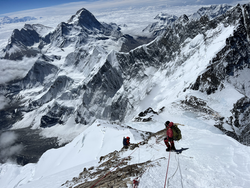



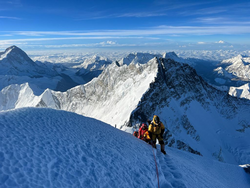

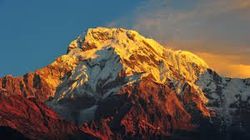

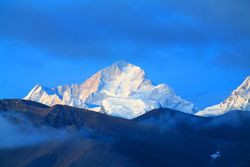
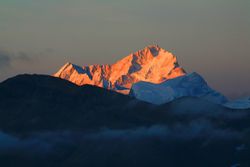

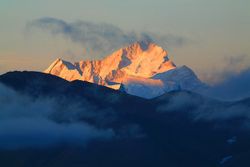
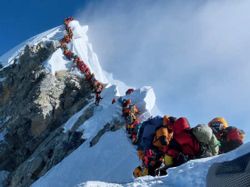
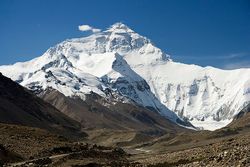

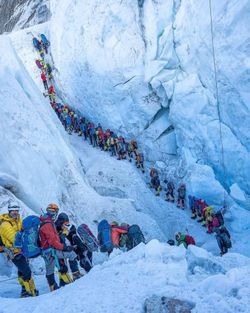
By undefined
24 notes ・ 3 views
English
Intermediate